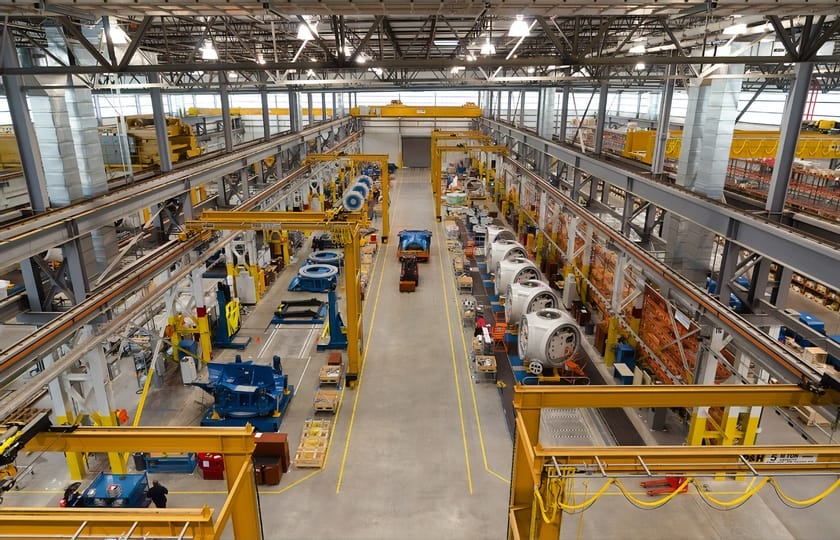PlantStar BLOG
Lights-Out Manufacturing Part 3: Challenges
May 29, 2020 10:12:39 AM / by PlantStar Team

Lights-out manufacturing is the concept of factories being fully automated in order to reduce human intervention in manufacturing processes. In our lights-out series, we’re delving deep into the world of automated manufacturing to provide a complete look at this process.
Preparing for Increased Automation
In Part 1 of our series, we introduced you to lights-out manufacturing and looked at what it meant to have a true, lights-out production facility. Then, in Part 2, we looked more closely at some of the key benefits of operating lights-out that went beyond just minimizing costs and maximizing efficiency.
As we move through a new phase in the Industrial Revolution or Industry 4.0, manufacturers are focusing more and more on automation, artificial intelligence, and real-time data than ever before. While most have yet to achieve a fully lights-out operation, many have taken intermediary steps to move their operations closer in that direction. By implementing initiatives that have allowed them to automate individual steps in their production process, these companies have been able to reap some of the benefits available through lights-out production. Regardless of the level of automation achieved, however, these benefits are not without their challenges.
SYSCON PlantStar, has been helping manufacturers gain better control of their machines and their production data since 1976. Before most people had even contemplated the idea of the Internet and the very idea of a cell phone was nothing more than a prop held by Captain Kirk, we were connecting machines to processing units on the shop floor. Through this experience, we are all too familiar with the challenges faced by manufacturers as they implement automation into their production process. Today we want to look at some of those challenges and look at the ways Manufacturing Execution Systems are helping them overcome these hurdles.
Challenges of Lights-Out Manufacturing
1) Reliable Off-Site Accessibility
Even in a fully automated lights-out facility, issues will arise. While some solutions do exist to evaluate and address simple problems that may occur on the shop floor, today human intervention is still required to resolve most major, unforeseen issues. For this reason, it is imperative that accurate, reliable information is accessible when no human is present on-site. An effective MES solution helps manufacturers solve this by providing dependable, real-time visibility into data through remote monitoring that’s accessible from any internet-connected device.
2) Safety and Reliability
Since no operator is present during lights-out production, there is no human to address any machine malfunctions or tool failures. This makes it essential to make sure all equipment, machines and tools are at peak operating efficiency and well maintained. With a reliable MES, manufacturers are able to perform predictive maintenance on their production equipment when OEE falls below the desired threshold, instead of having to wait for production to be disrupted before taking action.
3) Technical Challenges
This is often a major barrier to production automation, as many companies may lack the technical knowledge or materials needed for such an ambitious endeavor. Connecting older machines with a newer MES, for example, comes with unique complications that many manufacturers are ill-equipped to handle.
4) Economy of Scale
Lights-out production requires significant attention to detail and a major investment in equipment. For this reason, smaller-scale production is seldom sufficient to justify such an undertaking. Even with larger production operations, all the details of operation, from job scheduling to process monitoring, need to be on point in order to recoup the initial cost outlay.
If you’re interested in learning more about lights-out manufacturing and other ways to enhance efficiency in your manufacturing company, subscribe to our blog!
Subscribe to Email Updates
Posts by Topic
- Manufacturing Execution Systems (38)
- manufacturing solutions (16)
- MES 101 (13)
- Industry 4.0 (11)
- improve efficiency (10)
- Plastic Molding (9)
- Plastics Technology (9)
- mes software (9)
- mes solutions (9)
- MES hardware (8)
- Shop Floor Production (8)
- digital transformation (7)
- Reduce scrap (6)
- data-driven-decisions (6)
- Medical molding (5)
- lean manufacturing (5)
- process monitoring (5)
- product quality (5)
- lights-out manufacturing (4)
- manufacturing dashboard (4)
- production monitoring (4)
- ERP integration (3)
- Shop Floor Safety (3)
- supply chain management (3)
- Injection Molding Technology (2)
- defect collection (2)
- machine mes (2)
- process variables (2)
- digital strategy (1)
- labor gap (1)
- throughput (1)



